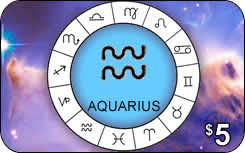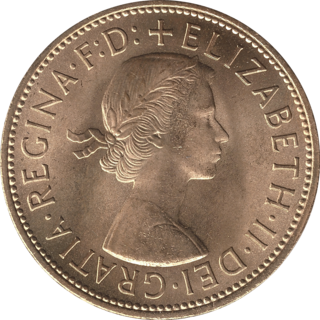The bit is the most basic unit of information in computing and digital communications. The name is a portmanteau of binary digit. The bit represents a logical state with one of two possible values. These values are most commonly represented as either "1" or "0", but other representations such as true/false, yes/no, on/off, or +/− are also commonly used.

The krona is the official currency of Sweden. Both the ISO code "SEK" and currency sign "kr" are in common use; the former precedes or follows the value, the latter usually follows it but, especially in the past, it sometimes preceded the value. In English, the currency is sometimes referred to as the Swedish crown, as krona literally means "crown" in Swedish. The Swedish krona was the ninth-most traded currency in the world by value in April 2016.

A telephone card, calling card or phonecard for short, is a credit card-size plastic or paper card, used to pay for telephone services. It is not necessary to have the physical card except with a stored-value system; knowledge of the access telephone number to dial and the PIN is sufficient. Standard cards which can be purchased and used without any sort of account facility give a fixed amount of credit and are discarded when used up; rechargeable cards can be topped up, or collect payment in arrears. The system for payment and the way in which the card is used to place a telephone call vary from card to card.

Pulse dialing is a signaling technology in telecommunications in which a direct current local loop circuit is interrupted according to a defined coding system for each signal transmitted, usually a digit. This lends the method the often used name loop disconnect dialing. In the most common variant of pulse dialing, decadic dialing, each of the ten Arabic numerals are encoded in a sequence of up to ten pulses. The most common version decodes the digits 1 through 9, as one to nine pulses, respectively, and the digit 0 as ten pulses. Historically, the most common device to produce such pulse trains is the rotary dial of the telephone, lending the technology another name, rotary dialing.

Commodity money is money whose value comes from a commodity of which it is made. Commodity money consists of objects having value or use in themselves as well as their value in buying goods. This is in contrast to representative money, which has no intrinsic value but represents something of value such as gold or silver, in which it can be exchanged, and fiat money, which derives its value from having been established as money by government regulation.

In economics, cash is money in the physical form of currency, such as banknotes and coins.

A payphone is typically a coin-operated public telephone, often located in a telephone booth or in high-traffic outdoor areas, with prepayment by inserting money or by billing a credit or debit card, or a telephone card. Prepaid calling cards also facilitate establishing a call by first calling the provided toll-free telephone number, entering the card account number and PIN, then the desired telephone number. An equipment usage fee may be charged as additional units, minutes or tariff fee to the collect/third-party, debit, credit, telephone or prepaid calling card when used at payphones. By agreement with the landlord, either the phone company pays rent for the location and keeps the revenue, or the landlord pays rent for the phone and shares the revenue.

A numerical digit is a single symbol used alone or in combinations, to represent numbers in a positional numeral system. The name "digit" comes from the fact that the ten digits of the hands correspond to the ten symbols of the common base 10 numeral system, i.e. the decimal digits.
The mill or mil is a unit of currency, used in several countries as one-thousandth of the base unit. In the United States, it is a notional unit equivalent to a thousandth of a United States dollar. In the United Kingdom, it was proposed during the decades of discussion on the decimalisation as a 1⁄1000 division of sterling's pound. While this system was never adopted in the United Kingdom, the currencies of some British or formerly British territories did adopt it, such as the Palestine pound and the Maltese lira.

Obverse and its opposite, reverse, refer to the two flat faces of coins and some other two-sided objects, including paper money, flags, seals, medals, drawings, old master prints and other works of art, and printed fabrics. In this usage, obverse means the front face of the object and reverse means the back face. The obverse of a coin is commonly called heads, because it often depicts the head of a prominent person, and the reverse tails.

The birr is the unit of currency in Ethiopia. It is subdivided into 100 santim.

Prestel, the brand name for the UK Post Office Telecommunications's Viewdata technology, was an interactive videotex system developed during the late 1970s and commercially launched in 1979. It achieved a maximum of 90,000 subscribers in the UK and was eventually sold by BT in 1994.

The lira (; plural lire; Italian: [ˈliːre] was the currency of Italy between 1861 and 2002. It was first introduced by the Napoleonic Kingdom of Italy in 1807 at par with the French franc, and was subsequently adopted by the different states that would eventually form the Kingdom of Italy in 1861. It was subdivided into 100 centesimi, which means "hundredths" or "cents". The lira was also the currency of the Albanian Kingdom from 1941-1943.

In numismatics, token coins or trade tokens are coin-like objects used instead of coins. The field of token coins is part of exonumia and token coins are token money. Tokens have a denomination either shown or implied by size, color or shape. "Tokens" are often made of cheaper metals: copper, pewter, aluminium, brass and tin were commonly used, while bakelite, leather, porcelain, and other less durable materials are also known.

Telephone tokens were token coins once widely used for making telephone calls from public telephones in place of ordinary coins. They were also sometimes used as a medium of exchange and as a collectible. Telephone tokens were once widely used in Europe, Israel, Japan, and South America, but have since been largely superseded by telephone cards and credit cards.
The Papal Mint is the pope's institute for the production of hard cash. Papal Mint also refers to the buildings in Avignon, Rome, and elsewhere that used to house the mint..
A payment card number, primary account number (PAN), or simply a card number, is the card identifier found on payment cards, such as credit cards and debit cards, as well as stored-value cards, gift cards and other similar cards. In some situations the card number is referred to as a bank card number. The card number is primarily a card identifier and does not directly identify the bank account number/s to which the card is/are linked by the issuing entity. The card number prefix identifies the issuer of the card, and the digits that follow are used by the issuing entity to identify the cardholder as a customer and which is then associated by the issuing entity with the customer's designated bank accounts. In the case of stored-value type cards, the association with a particular customer is only made if the prepaid card is reloadable. Card numbers are allocated in accordance with ISO/IEC 7812. The card number is usually prominently embossed on the front of a payment card, and is encoded on the magnetic stripe and chip, but may be imprinted on the back of the card.
La ruota della fortuna was the Italian version of Wheel of Fortune. The show has run nonstop since 1988 on Canale 5 and Rete 4, and switched from a trilon to an electronic board in the mid 1990s, like the U.S. version. Previously hosted by Mike Bongiorno, the show was hosted by Enrico Papi on Italia 1, and featured Victoria Silvstedt from the French version of the show, La Roue de la Fortune. The Italian version of Wheel went off the air in 2009.

The British pre-decimal penny (1d) was a unit of currency worth 1/240 of one pound or 1/12 of one shilling sterling. Its symbol was d, from the Roman denarius. It was a continuation of the earlier English penny, and in Scotland it had the same monetary value as one pre-1707 Scottish shilling. The penny was originally minted in silver, but from the late 18th century it was minted in copper, and then after 1860 in bronze.
Italy has a long history of different coinage types, which spans thousands of years. Italy has been influential at a coinage point of view: the florin, one of the most used coinage types in European history, was struck in Florence in the 13th century. Since Italy has been for centuries divided into many city-states, they all had different coinage systems, but when the country became unified in 1861, the Italian lira came into place, and was used until 2002. Today, Italy uses the Euro.















